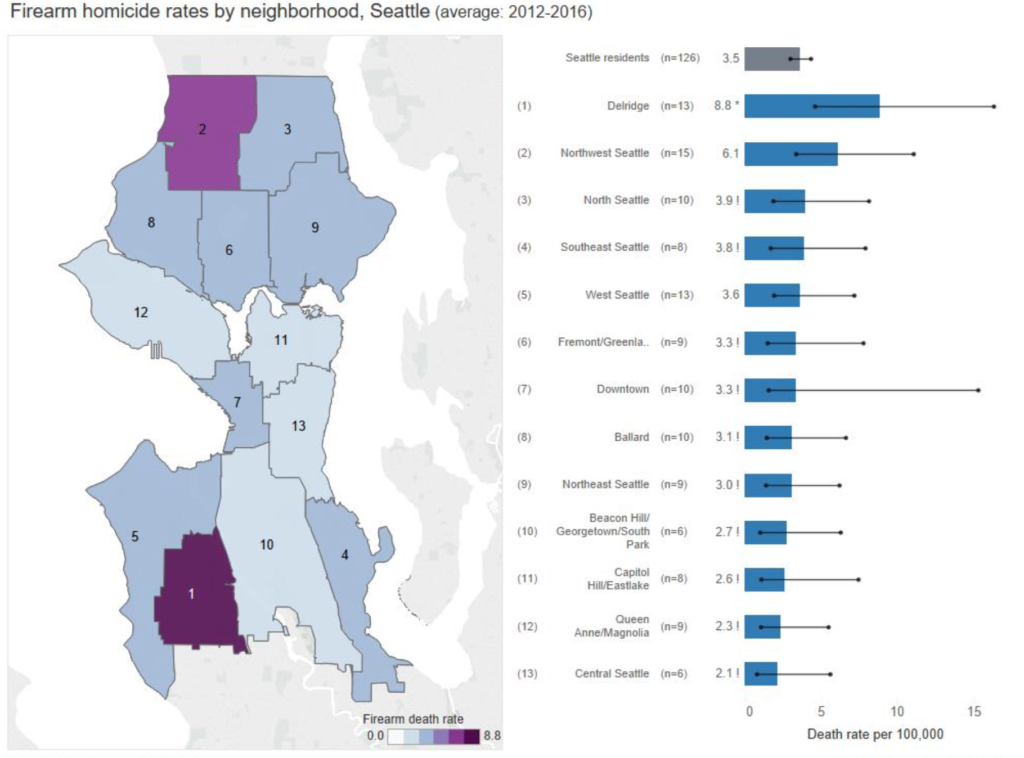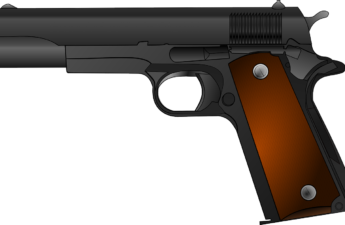Excerpted from a post by Public Health – Seattle & King County

From 2012 – 2016, almost three quarters of deaths by firearm in King County residents were suicides.
Middle-aged and older adults and men overall have higher firearm suicide rates than the King County average.
- In King County, there were about 106 suicides and 37 homicides per year on average.
- Firearm suicides are the most common cause of firearm deaths for King County and Seattle residents, accounting for 71% and 60% of all firearm deaths, respectively.”
- Firearm homicides represented 33% of firearm deaths among Seattle residents, compared to 25% of firearm deaths among King County residents.
White, American Indian and Alaska Native* populations have higher rates of firearm suicides.
Unlike firearm homicide, suicides by firearm aren’t concentrated by poverty or neighborhood; this is something that affects all communities.
Like homicide, a death by suicide affects many other people, and suicide risk can spread.
Full report here.
What you can do to reduce the risk of firearm suicides
We know that a firearm in the home increases the risk of suicide. Firearms are the most lethal means of suicide and it is rare to survive a suicide attempt with a gun.
Access to a firearm can greatly increase the risk of a temporary crisis, and suicide rates are higher in places with higher gun ownership.
Fortunately, firearm owners have several options to prevent their guns from being used in a suicide.
- Store firearms locked up in and near home. This is particularly useful for preventing suicide by young people and household members struggling with behavioral health issues. Keep the key on your person or the combination private; combinations should be changed if a family member who is unauthorized to use firearms and/or in crisis knows them. In instances where origin of the firearm was known, seventy percent of young people under age 18 who died by firearm suicide in King County between 1999 and 2017 used a gun belonging to a family member. Reducing access to unsecured guns can save a life.
- If you or someone you live with are having a crisis or suicidal thoughts, did you know it’s legal for you to transfer your guns to a trusted friend or family member for safe keeping? This is a good way to keep yourself safe or ensure your firearms are temporarily out of reach for a family member in crisis. For more information, see the specific language of the law here.
- If you’re worried a family member who might have access to firearms may hurt themselves or someone else, you may be able to get an Extreme Risk Protective Order, which temporarily suspends that person’s ability to possess or purchase firearms. See here for more information.
Everyone can play a role in preventing suicide. Be aware of the common warning signs of suicide risk, and if you see warning signs in someone else or yourself, reach out for help!
Asking for help in a crisis can be difficult for many of us, but it’s one of the best ways to protect ourselves when having suicidal thoughts. Some helpful resources:
*Some racial/ethnic groups and geographies in King County have small populations, making it difficult to reliably describe their health data and compare them with larger populations. The firearm suicide rate was high for American Indian/Alaska Native residents in King County although not significantly different from the rates for black, Hispanic, or white residents.


